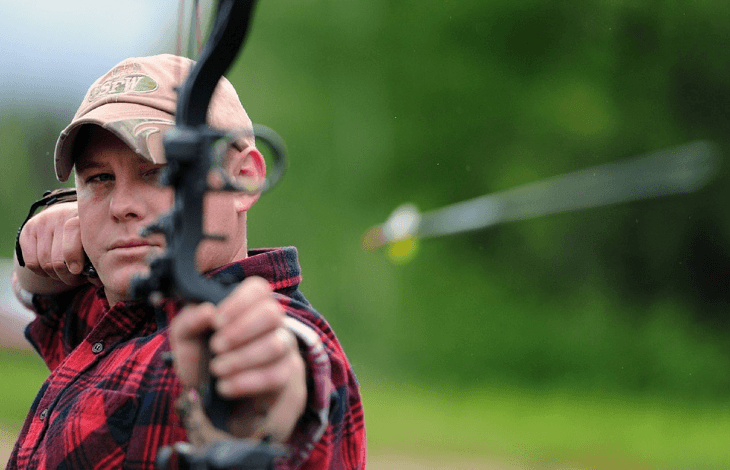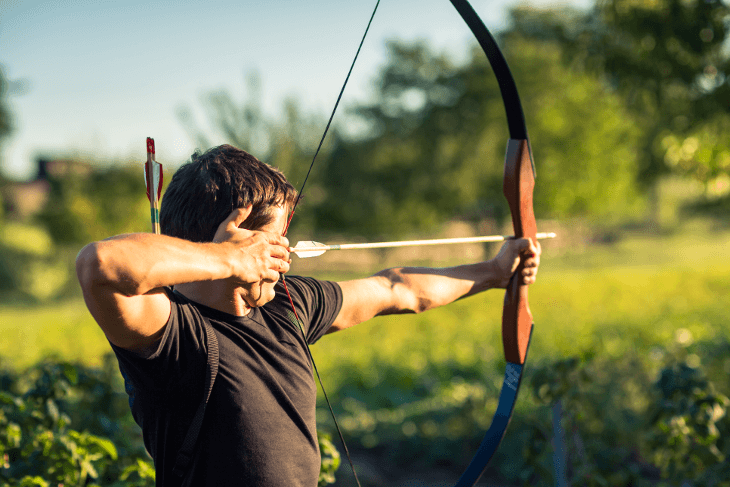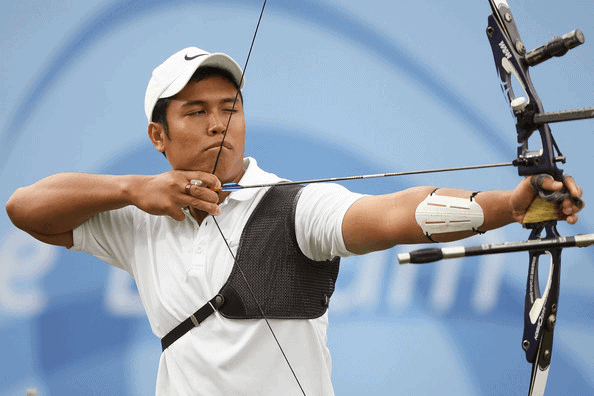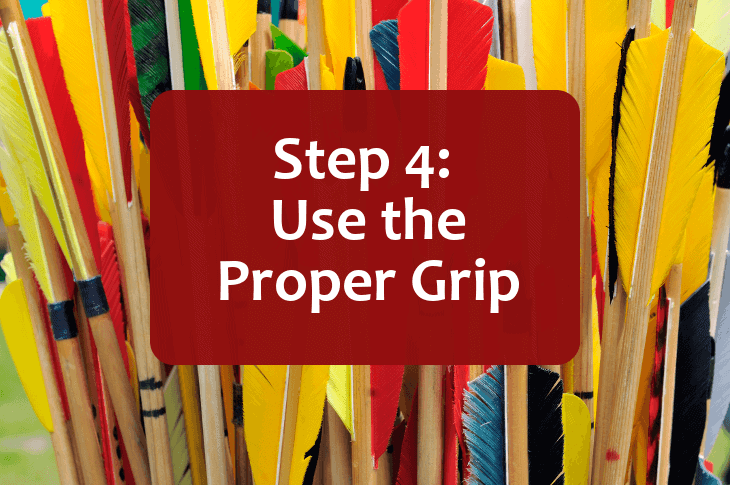This is another step that’s not too difficult to master, but it has an incredible effect on your performance, so it’s worth a closer look: ARCHERY GRIP. Specifically, your hand gripping the bow.
(By the way, this is Step #4 in our “How to Shoot a Bow and Arrow” series, so if you’d like to see all the steps in the same place, you can jump back to the main post.)
The Proper Bow Grip is a Little Counter-Intuitive
Here’s is Mistake #1 for most new archers: using a death grip to hold the bow. In other words, holding the bow way, way, way too tight.
When archers first grab a bow and step to the shooting line, their inclination is to grab the bow with everything they’ve got.
It makes sense, though, and there’s a reason why new archers grip the bow for dear life: most new archers realize that shooting an arrow is a serious thing, and they’re trying to be careful. Holding a bow with a relaxed grip feels very, very dangerous–especially when you’re shooting a bow with a draw weight that’s a little challenging to you.
The proper your grip on the bow should be very gentle. Here’s an image of what a grip should look like. It’s a little grainy, but hopefully you’ll get the idea:

As you can see, the fingers are fully grasping the bow, but they are placed lightly on the front of the bow, steadying it for the shot. The knuckles taper away from the bow at about a 45 degree angle. The archer’s hand and fingers are relaxed, but he/she still has full control of the bow.
By the way, just for reference—here’s what your bow hand should NOT look like:

This guy looks like he’s holding on for dear life, and I can guarantee that his bow is shaking after his release. Not only that, this archery grip may *feel* safe, but it’s actually dangerous, because you have less control over the arrow, and you have less control over the bow string after you’ve released your arrow.
(By the way—if you’re paying super-close attention, you may notice that I actually used this photograph in my “Archery for Beginners: How to Get Started” post—I didn’t want to, because I hate to post a photo of a guy using poor form, but there simply aren’t that many archery photos I can legally use!!)
Why Is It a Bad Thing to Tightly Grip the Bow?
It boils down to two main reasons:
- When you clench the muscles in your fingers, hand, wrist, and forearm, they begin to shake, and the longer and harder you clench them, the more they shake. The more they shake, the more your bow moves. Because the arrow touches the rest / whisker basket / shelf / etc. as it disconnects from the bow string and leaves the bow, those movements can affect the path of the arrow. In other words, death grip = inaccurate shots.
- If you’re clenching all the muscles I just mentioned, the bow is more likely to wiggle back and forth AFTER the arrow has left the bow, and the bow string is more likely to hit your inner elbow and give you a heck of a welt. That’s happened to me before, and it huuuuuuuuurts.
Ideally, your grip should give you full control of the bow, and not seem too forced.
A Few More Examples of a Relaxed Grip
Below I’ve included an image of Olympian Wan Khalmizam. Take a look at his bow hand:

His index finger—and his pinky—are touching the bow only as much as he needs them to. In fact, if you take a closer look, you’ll see that there’s a strip of grey material that goes from his thumb around the front of his riser. That’s called a bow sling, and it’s used to ensure that the bow does not fall out of the archer’s hands.
A grip *that* relaxed is a bit of an advanced technique, so it’s probably not for your if you’re a beginner—if you’re just starting out, grip your bow tightly enough so you know you won’t drop it.
Here’s a link to Jennifer Nichols Hardy shooting. This is a great example of a relaxed grip: her knuckles fall at a downward angle of 45 degrees, and her fingers grasp the bow handle without strangling it. Jennifer is a three-time Olympian, so chances are she’d doing something right.
Here’s another image of Olympic archer Khatuna Lorig aiming, and you can see the same thing: how bow hand steadily grasps the bow, without strangling it to death.
If you are new to archery, you DO NOT want to grip the bow so loosely that you drop it, or that it slips during the draw. You’re looking for a happy medium–someplace between “strangle the death out of the bow” and “too loose.” Right in between those two grips.
One More Thing I Should Mention About the Bow Hand…
Or more specifically, the bow forearm. You’ll need an arm guard. I’ve written about it here and here. Always use protective gear!
That’s It for Grips
What’s next? Step #5–Ready Your Bow Arm!


